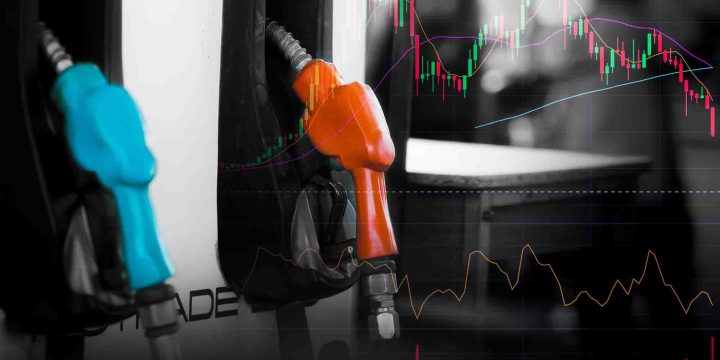ECONOMIC OUTLOOK OP-ED
Opec+ production cutback threatens to forestall easing global inflation

An unexpected one million-barrel-a-day cutback in oil production by Opec+ last week, at a time when supplies were already expected to be tight this year, threatens to revive energy price inflation and feed through to food prices. The decision added some $5 to 2023 oil price forecasts, with a $100-plus oil price in sight again.
Inflation may have taken a back seat to the banking shenanigans, but it is still alive and well – and the Opec+ unexpected decision to cut back on production levels highlights that a well-behaved decline in energy prices cannot be relied upon and risks upending the inflation ground that has been gained in the past year.
The nine-member oil producers that are members of the oil cartel announced they would be reducing production by 1 million barrels per day, which ING describes as “a fairly odd decision” because oil prices, which declined during the financial market volatility recently, have partly recovered and the fundamentals underpinning the oil market are still expected to tighten this year.
Coming into 2023, the common consensus was that oil supplies would be tight in the second half of the year, with global bank research teams predicting $90-plus prices a barrel. The decision to cut output has increased ING’s expected oil production deficit to more than 2m barrels per day from its pre-decision 1.3m barrels per day from the second quarter to the end of the year.
That pushed up ING’s Brent crude oil price forecast to above $100 a barrel, which is at the upper end of bank forecasts. Barclays is bumping up its projection by $5 to $92 per barrel price this year and Goldman Sachs to $95 a barrel by December this year, also a $5 increase.
The news of this contraction in production is not good for inflation on two fronts. It contributes to the uncertainty and volatility attached to oil prices, and it may well feed through to higher inflation unless China’s economic rebound is milder than expected and oil prices are not pushed by exuberant demand.
Volatility in financial market assets has been elevated for years now, but the IMF is particularly concerned with the impact volatile commodity prices have on swings in inflation and, ultimately, growth.
In its recent analysis, which examines how economic growth and inflation are affected by volatility in commodity terms of trade, the IMF finds that swings in commodity prices could weigh on long-term economic growth, especially for commodity exporters, and commodity price volatility is likely to increase the volatility of domestic inflation over the medium term.
It believes that the risk of renewed surges in energy and food prices remains, even though commodity price pressures have “somewhat receded” but remain high by historical standards.
“Disruptions to these commodity markets could reappear, posing a further threat to food and energy security.”
IMF also warns that rising geo-economic fragmentation and climate change add to the risks. The decision by Opec+ to reduce production, notwithstanding the US saying such a move is “inadvisable”, is further evidence of the deterioration in relations between the US and Saudi Arabia (responsible for 50% of the organisation’s production).
It also points to the member companies’ confidence that they won’t see a strong supply response from the US producers, as in the past, according to ING. It says the days of US productors pumping as much as possible are gone, and the focus is now on capital discipline and shareholder returns. That puts Opec+ members in a position to maximise revenues without fear of losing significant market share.
All of these risks add to uncertainty regarding the global inflation outlook. While headline inflation has been coming down, there are still concerns about the persistence of core inflation. Rising energy prices would bump up headline inflation directly and via an increase in food prices – undoing the ground central banks have managed to gain in their efforts to contain inflation over the last year, and prolonging the rate hikes that threaten to weigh on the global economy.
Energy price inflation feeds into food price inflation, with both moving in tandem 75% of the time since 2004. The IMF’s G-20 background note on the macroeconomic impact of food and energy insecurity says there are three notable reasons for this co-movement. These are:
- Global activity directly impacts demand for commodities that are an input into food production.
- Fluctuations in oil and gas prices feed into food prices, given the importance of energy in food production.
- Higher oil prices increase food prices as a result of food producers substituting oil with biofuels as an energy source, which then increases demand for and price of the underlying crops.
For now, however, the news coming out about inflation is relatively encouraging. Over the past week, the inflation measure the US Federal Reserve prefers to use as indicative of price pressures in the economy – the Personal Consumption Expenditures price index – showed signs of gradually easing. The index rose at 5% versus a year ago in February – slower than January’s 5.3% annual increase. Meanwhile, core inflation also rose at a slower 4.6% on a year ago.
In Europe, the EU statistical office, Eurostat, published its flash inflation estimate for March across the 20 countries that use the euro. It expects inflation to decline to 6.9% – its slowest pace in a year and well below February’s 8.5%.
Energy prices are expected to decline – 0.9% from a year ago compared with 13.7% in February. But food, alcohol and tobacco prices are expected to rise the most, increasing to 15.4% compared with 15% in February.
South Africa’s inflation outlook is less encouraging and thus even more vulnerable to oil-related price pressures. according to the SA Reserve Bank’s Monetary Policy Statement last week, and thus we may be at more risk of experiencing upward pressures on energy and food price inflation from the double whammy of a weaker rand and higher oil price.
The Reserve Bank revised its 2023 headline inflation forecast in its Monetary Policy Statement “significantly higher” to 6% versus 5.4% and warned that risks to the inflation outlook are to the upside.
The central bank specifically pinpointed Russia’s war against Ukraine and China’s economic rebound as expected to keep the global oil market “relatively tight” – and that was before the Opec+ announcement.
It’s been a year full of surprises again, and the Opec+ announcement added another cause for concern in an already extremely complex and unpredictable macroeconomic environment. DM/BM


















Please do not expect demand for Opec to surge because of a recovery in China .
Firstly , a recovery is not looking good .
Secondly , China is buying all the cheap oil it can from Russia , has been for months !